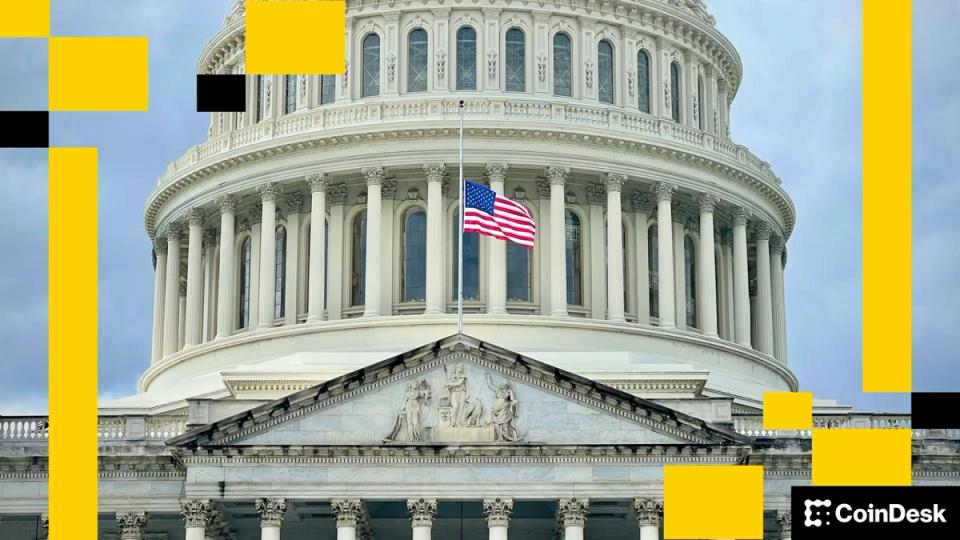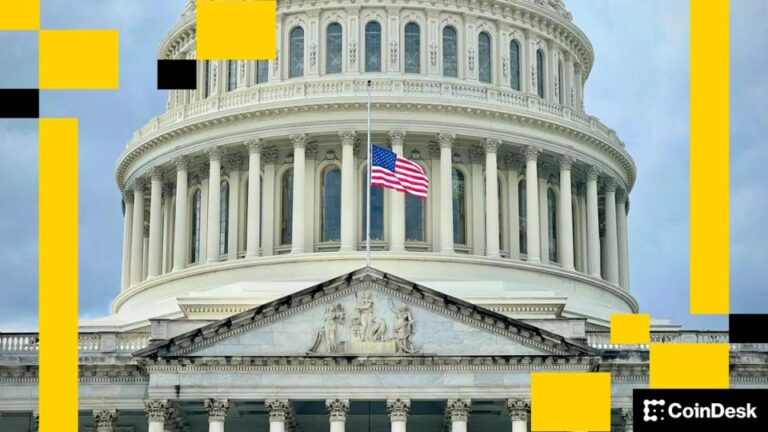
Polymarket traders see a 96% chance the record-long shutdown ends by mid-November, as the Senate passes a deal and pressure mounts on House Republicans to act.
Nov 11, 2025, 7:19 a.m.
The record-long U.S. government shutdown appears to be in its final stretch, with prediction markets signaling overwhelming confidence that a deal will clear Congress within days.
On Polymarket, traders now assign a 96% probability that the government reopens between November 12 and 15, aligning with the expected House vote on the Senate’s bipartisan funding bill.
Over on Kalshi, contracts tied to the duration of the shutdown have seen similar momentum, with traders pricing in an end within the next 72 hours as confidence surged following the Senate’s 60–40 vote to fund the government through January 30.
The jump in odds followed a decisive shift in Washington over the weekend.
Seven Senate Democrats broke ranks to join Republicans in advancing a bill that reverses mass federal layoffs, restores back pay and food assistance, and keeps federal agencies running but leaves one politically explosive issue unresolved: the expiring Affordable Care Act (ACA) subsidies, which help lower monthly insurance premiums for millions.
December vote on subsidies
Even some of Trump’s allies are pushing back. Representative Marjorie Taylor Greene accused party leaders of “having no plan” to address potential doubling of premiums if subsidies lapse, while a bloc of endangered House Republicans has urged Speaker Mike Johnson to act before year’s end. Johnson has yet to commit to a vote on ACA relief, though he pledged to hold “a deliberative process” after the government reopens.
A December Senate vote on the subsidies is part of the shutdown deal, but passage remains uncertain.
If prediction markets are right, the government could reopen by Nov. 14, once the House passes the funding bill and Trump signs it. But as Kalshi and Polymarket traders lock in profits at the end of the shutdown, both parties are still gambling on a far tougher question: who gets blamed for it.
Midterm betting
And if the results of next year’s midterm elections are the blame game, prediction markets are already keeping score.
On Polymarket, traders give Republicans a 44% chance of holding the Senate while losing the House, a split outcome that implies voters may punish both parties for Washington’s dysfunction.
Odds of a Democratic sweep and a Republican sweep are tied at roughly 27% each, suggesting neither side has managed to turn the shutdown into political capital.
AI Disclaimer: Parts of this article were generated with the assistance from AI tools and reviewed by our editorial team to ensure accuracy and adherence to our standards. For more information, see CoinDesk’s full AI Policy.
More For You
Inside Zcash: Encrypted Money at Planetary Scale
A deep dive into Zcash’s zero-knowledge architecture, shielded transaction growth, and its path to becoming encrypted Bitcoin at scale.
What to know:
In 2025, Zcash evolved from niche privacy tech into a functioning encrypted-money network:
- Shielded adoption surged, with 20–25% of circulating ZEC now held in encrypted addresses and 30% of transactions involving the shielded pool.
- The Zashi wallet made shielded transfers the default, pushing privacy from optional to standard practice.
- Project Tachyon, led by Sean Bowe, aims to boost throughput to thousands of private transactions per second.
- Zcash surpassed Monero in market share, becoming the largest privacy-focused cryptocurrency by capitalization.
More For You
China Accuses U.S. of Stealing 127K BTC in High-Profile Crypto Hack
CVERC claims the hack was conducted by a “state-level hacking organization” and suggests the U.S. seizure was part of a larger operation involving the same attackers.
What to know:
- China’s National Computer Virus Emergency Response Center (CVERC) accused the U.S. government of seizing 127,000 stolen bitcoin (worth $13 billion) that were originally hacked in 2020 from a Chinese mining pool.
- CVERC claimed the hack was conducted by a “state-level hacking organization” and suggested the U.S. seizure was part of a larger operation involving the same attackers.
- The U.S. government disputed CVERC’s claims, maintaining that the seizure was a legitimate law enforcement action targeting criminal proceeds, while China sees it as a provocative act escalating tensions between the two nations.
